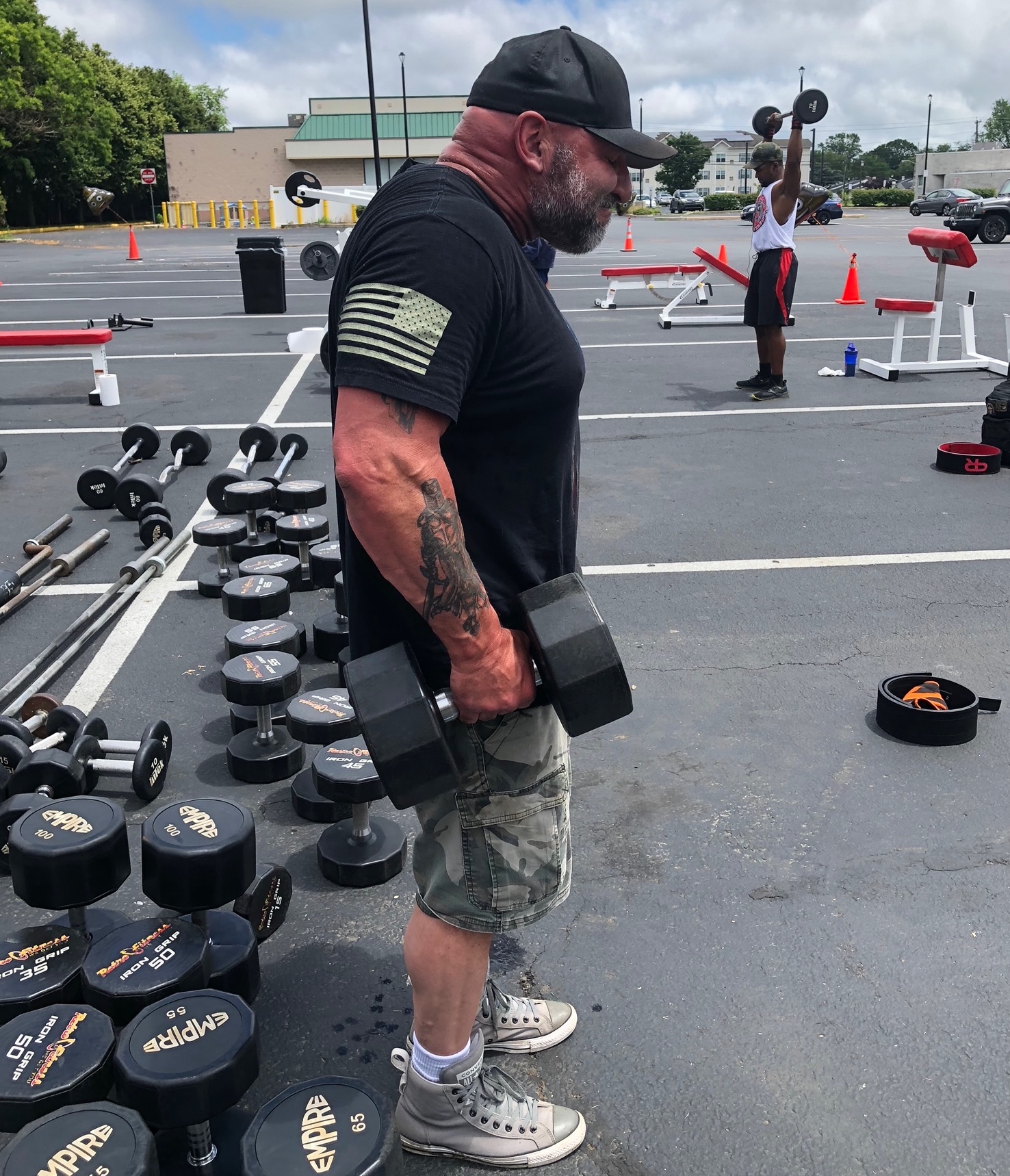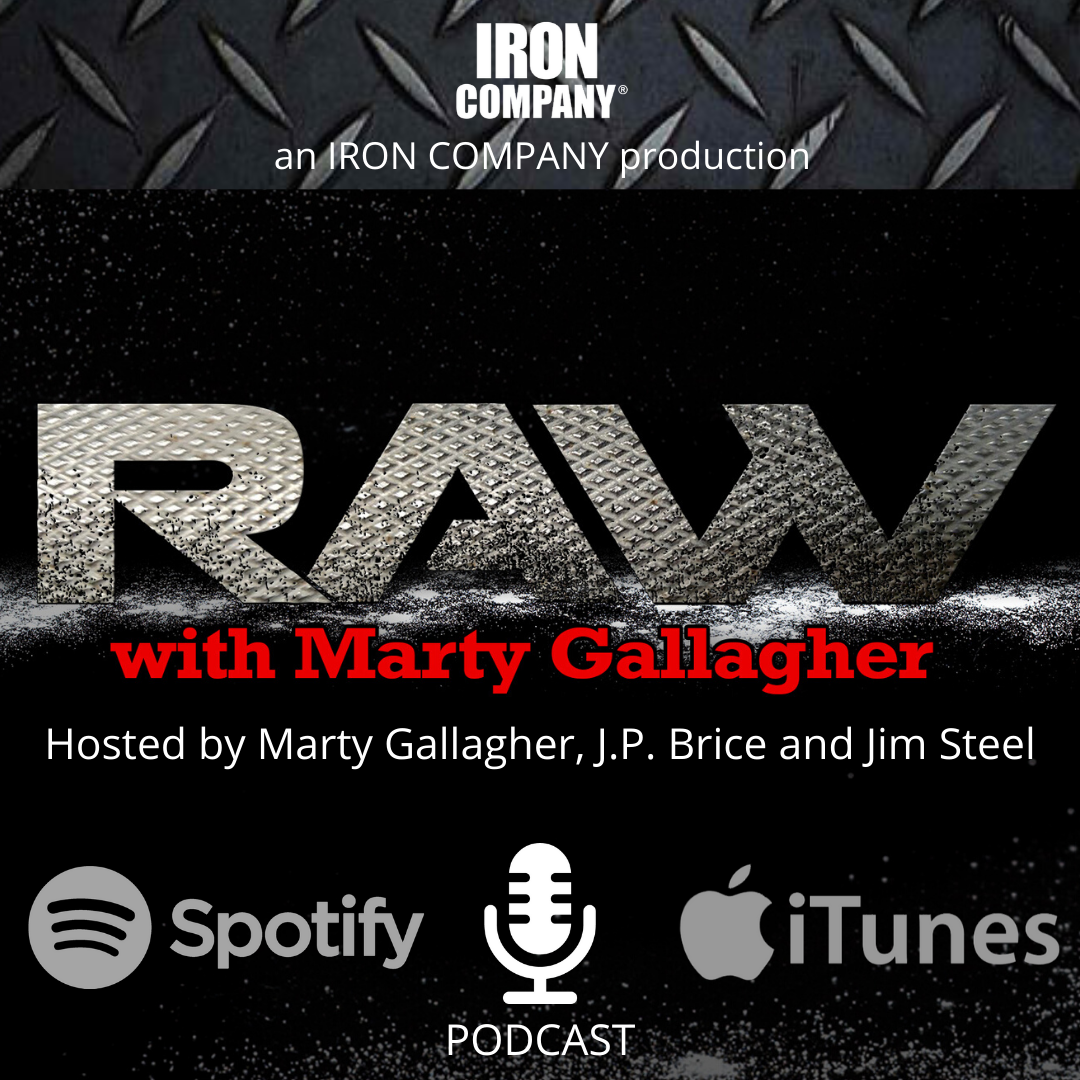
Grab It And Go - Busting Through The Workout Confusion
I was eavesdropping between my sets the other day in a conversation between two teenage boys in the gym. I estimated them to be around 16-18 years old, and they both looked like beginners. They didn't have any appreciable muscle to speak of, they just looked like normal kids who either just began training with free weights or they had been training a while but didn't know what they were doing. The one kid was telling the other how to perform seated dumbbell presses, and how to twist the dumbbells and then they were talking some more of the best way to do tiny little exercises with dumbbells and what part of the muscle the exercise works when your pinky does this or you hold the dumbbells like that, and I wanted to yell out, “Just go barbell squat until you can barely walk and then do it again in three days and do it for five years, and you will see tremendous gains!”
But I didn't. I learned a long time ago not to give advice in the gym. I either get the “who the hell are you?” look or people just tell me that they know what works for them. But quite often, they obviously don’t know, or they would have some muscle to show, but alas, I held my tongue. And I also try to be understanding about why folks “don't know what they don't know”. They are most likely confused and have just gone down the wrong training path, because with the preponderance of information out there about programming and different training splits and ideas about training and all that, folks get pretty confused about what they should be doing in the weight room. If you feel like you are confused and don't know what to do, (some call it Analysis Paralysis), sometimes the best thing to do is to just grab it and go.
I started saying “Grab it and Go”, years ago when athletes would hesitate before a heavy set of barbell squats, deadlifts or bench press, but it fits into what I am writing about when folks get confused regarding just what to do in the weight room.
What this means is that when it all gets too confusing, go into the weight room and just perform the basics. Get under the weight bar and squat, do some presses, get your deadlifts in and some rows, dips, chins and curls and you will be fine. Keep it simple. Stand on the shoulders of the lifting giants that came before you and stick to an “old school” training session.
Don't worry about doing “exotic” exercises like cable crossovers and tons of exercise machine work and different permutations of the basic exercises. Do some full squats, do the barbell bench press and overhead press and stick to a full deadlift instead of partials. Trust me, this type of training has worked forever, and if you do the basic exercises correctly, they will work for you also.
And the funny thing is that if the two kids whose conversation I was eavesdropping on just turned off social media or YouTube and pulled their program from Bill Starr’s The Strong Shall Survive, or Marty Gallagher’s Purposeful Primitive, and then just stuck to one of their basic programs, they would make strength and size gains beyond their wildest dreams if applied correctly, meaning that they busted their butts every time that they trained, and ate and slept and were consistent.
Maybe it's because folks want the easy way out, and in certain instances, that may be the case, but I think that it's more confusion than anything else. In most cases, choosing the hardest exercises is the best way to go to make gains faster. For instance, the back squat and the front squat are both brutally tough exercises that demand your whole body to work hard, compared to an exercise such as leg extensions, which basically isolates the quadriceps muscles without a lot of other muscles involved in their execution.
I was fortunate that when I first began weight training , squats were just coming into vogue. Tom Platz was my favorite bodybuilder and he espoused the great benefits of squats and Dr. Fred Hatfield (“Dr. Squat”) was also on the scene at the time and I read everything that I could get my hands on by them and about them. If they did it, I did it. Before them, sure, people squatted, but it was the era of chest and biceps training and there were plenty of lifters who just did bench presses and curls. With the emphasis on squats from Platz and Hatfield, that all changed. Now squats were popular and leg development took off from there. No longer was it acceptable to have so-so legs. And most of the increase in crazy leg muscularity can be attributed to the increase in squatting among the top bodybuilders. The problem today is that beginners see some professionals do their hack squats and extensions and leg curls and such for their training and they think that is what they should be doing, but what they don't see is the years spent under the bar performing set after set of barbell squats. Even now, massive pro’s such as James Hollingshead squat tremendous amounts of weight regularly in their training. Many of the “new breed” of bodybuilder’s like Hollingshead and Akim Williams frequently squat over 600 pounds for reps in training. And their leg development shows it! They have a different look to their legs, a mass that those who do not lift with the basics like squats don't possess.
I always thought that if squats, deadlifts and benches were good enough for the most massive and strong lifters on the earth, why wouldn't it be good enough for me?
I feel like I can tell, just by looking at them, the lifters who have spent time lifting heavy with the basics versus those that trained with a lot of machines. It's a different look, a harder look, a grainier look. Bodybuilders such as Ronnie Coleman (the most massive person that I have ever seen in person), Branch Warren, Johnny Jackson and the indomitable Dorian Yates all deadlifted huge weights in their training and their backs have a thickness that others just didn't have, low backs with striations and barn door lats that also had a mid-back thickness, different than the machine boys. You know it when you see it, those backs that were built by the deadlift compared to the lat pulldown backs of some.
It is fine to include some of the machine stuff and the cable stuff, but think of them as the dessert of the workout, not the meat and potatoes. If you are confused, you can't go wrong with the barbell basic lifts. I know this because the most massively muscular and strong people on earth have used them to develop superhuman totals in powerlifting meets and others have used them for decades to provide a foundation of tremendous muscularity.
If you are confused about how to train, take heart. Just get into the gym and perform the exercises that have been proven to work. Grab it and go. Load on some weight plates grab the bar and get after the basics. Do tough sets, 3-5, with perfect form for 5-8 reps. Do it 3-4 days a week and do it for years. They are the main course. Save the exotics for the pump afterwards, like a reward for digging deep on the exercises that give you the most bang for the buck.
About The Author - Jim Steel
Jim Steel has been immersed in athletics and the Iron Game for most of his life. He has been a college football player and coach, powerlifter, Muay Thai fighter and is currently a competitive bodybuilder. In 1999, Steel was named Assistant Strength and Conditioning Coordinator at the University of Pennsylvania, and moved up to Head Strength and Conditioning Coordinator in 2004. He is the owner of the blog Basbarbell and is a motivational speaker, frequent podcast guest and the author of two books, Basbarbell Book of Programs and Steel Reflections. Steel is a Certified Strength and Conditioning Specialist with the National Strength and Conditioning Association. Jim Steel is co-host of the RAW with Marty Gallagher Podcast along with Marty Gallagher and J.P. Brice and is a monthly content contributor at IRON COMPANY.


